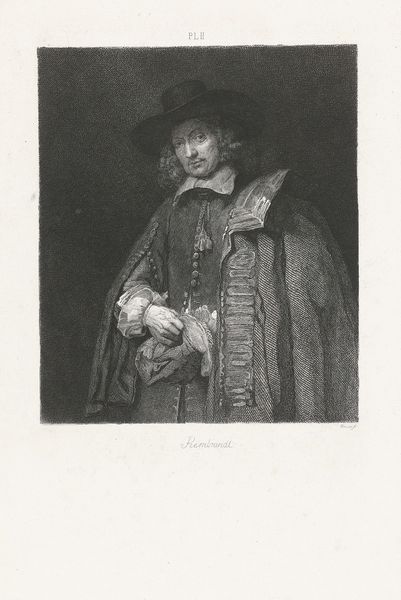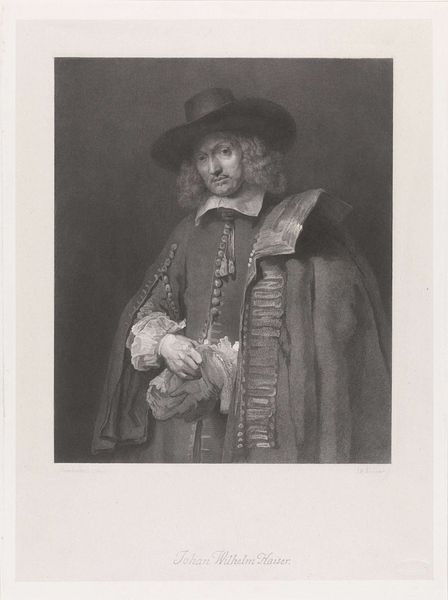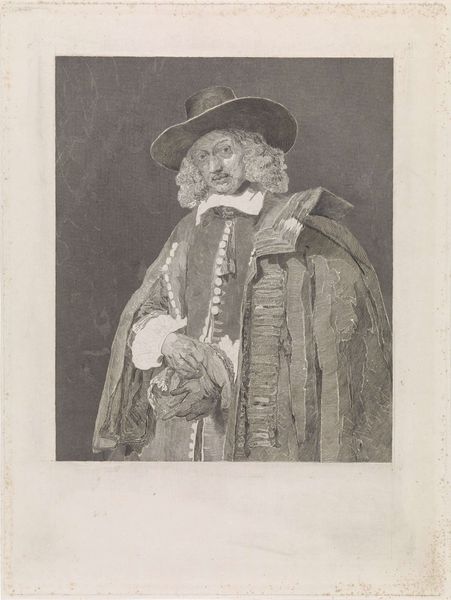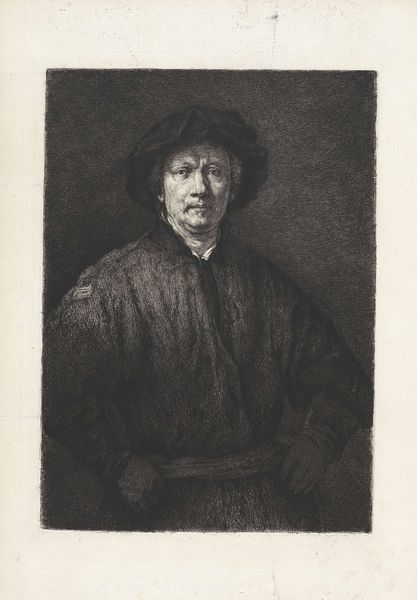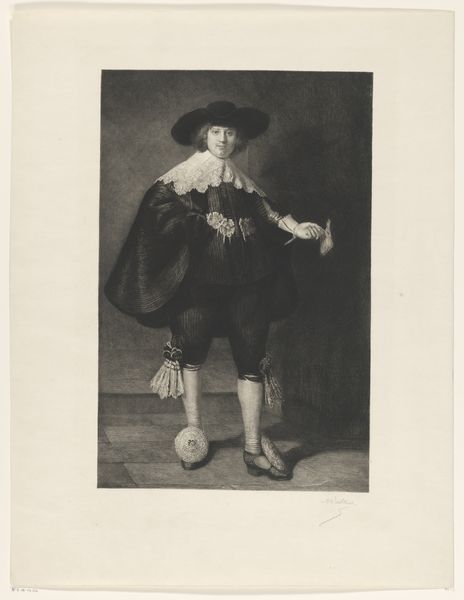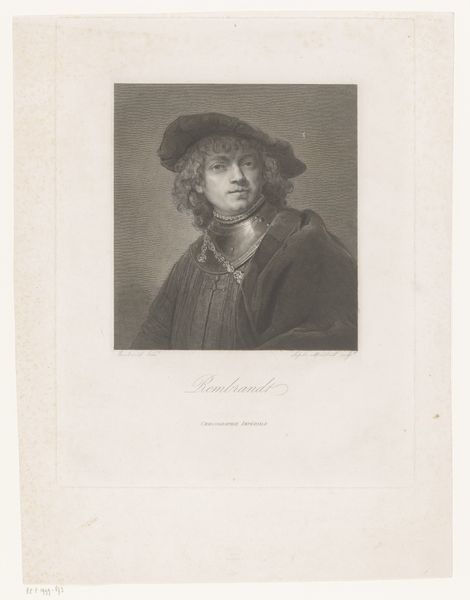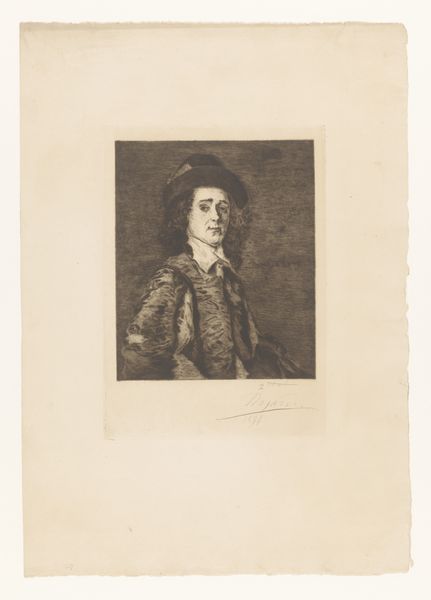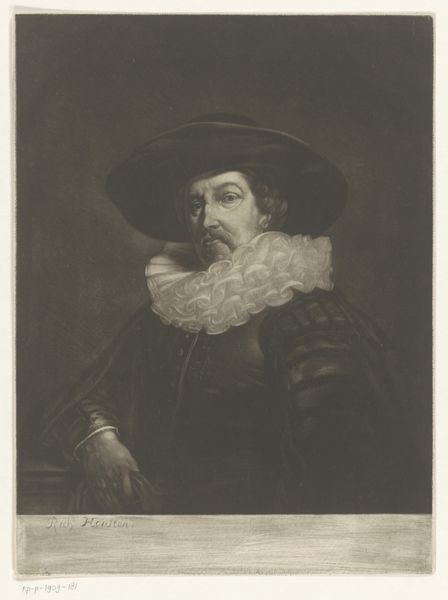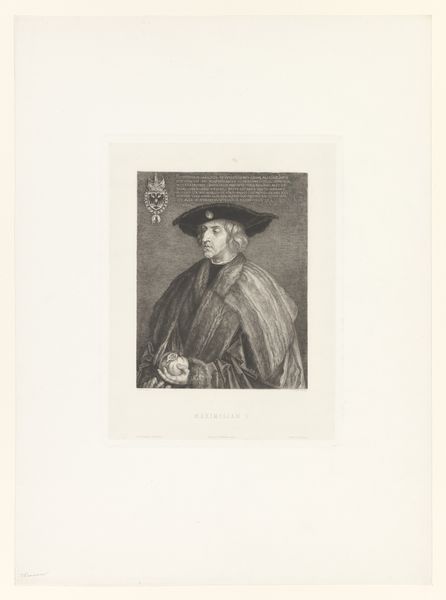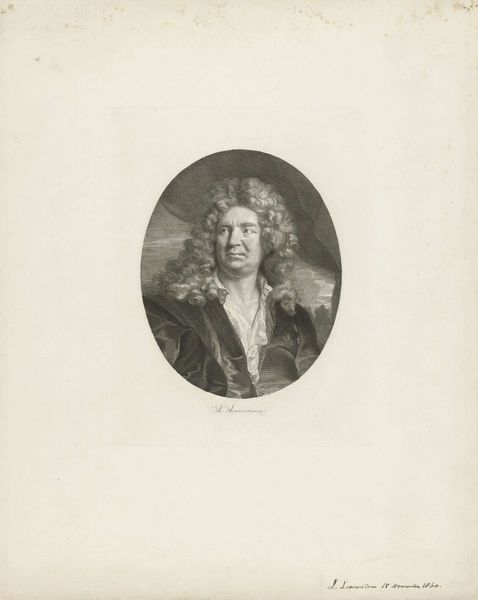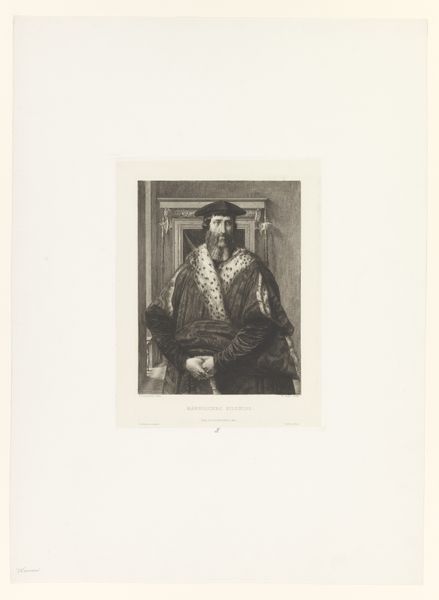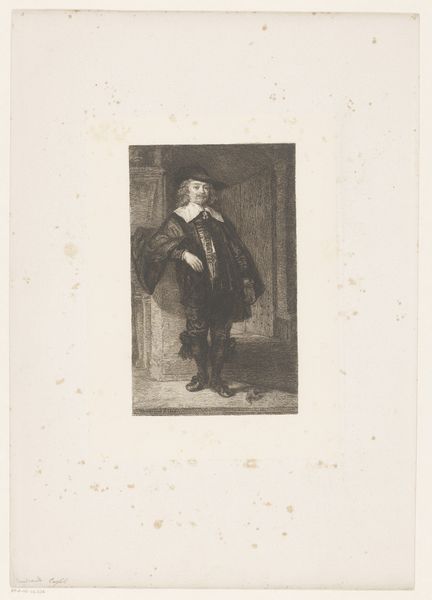
drawing, pencil, charcoal
#
portrait
#
pencil drawn
#
drawing
#
dutch-golden-age
#
pencil sketch
#
charcoal drawing
#
pencil drawing
#
pencil
#
charcoal
#
history-painting
Dimensions: height 347 mm, width 258 mm
Copyright: Rijks Museum: Open Domain
Willem Steelink the second created this portrait of Jan Six using etching techniques. Etching is all about process: the artist covers a metal plate with a waxy, acid-resistant layer, then scratches an image into that layer with a needle. The plate is then dipped in acid, which bites into the exposed metal, creating lines. These grooves hold ink which is then transferred onto paper. Steelink’s etched lines result in an image rich with textures, from the soft, blurred background to the intricate details of Six's clothing. The etching process, though technical, allows for a remarkable range of tonal variation, capturing the light and shadow. This interplay of textures and tones is integral to the print’s overall impact. By focusing on the etched marks themselves, the artwork shifts from a mere depiction of Jan Six to an artifact that celebrates the skills and tradition of printmaking. This perspective encourages us to value the craftsmanship involved in its creation, expanding our understanding of art beyond the subject matter.
Comments
No comments
Be the first to comment and join the conversation on the ultimate creative platform.
